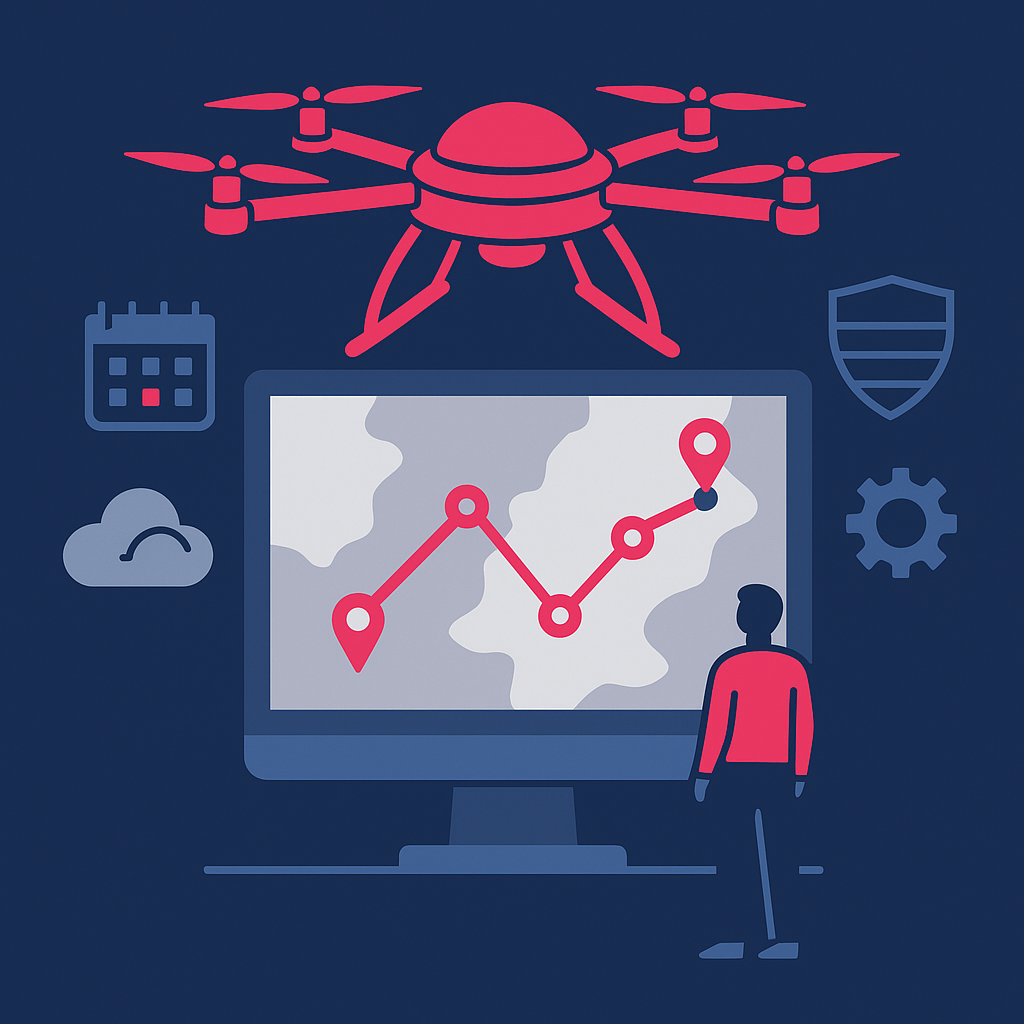
Why Your Drone Operations May Need a Custom Mission Planner
As drone technology continues to advance and gain traction across industries – from construction and agriculture to defense and delivery – flight planning tools are increasingly hitting their limits. While off-the-shelf mission planners are excellent for basic flight control, many enterprises quickly realize that custom mission planners are essential for unlocking the full potential of their UAV operations.
Below, we outline the key reasons why developing a custom mission planner might be the smartest investment for your drone-based business.
1. Tailored Mission Creation Features
Off-the-shelf tools often support simple waypoint planning. But enterprise UAV operations need more, including:
- 3D polygonal geofencing
- Customizable automated grid generation for mapping or surveillance
- Support for KML/KMZ imports (zones and mission plans)
- Operations calendar and weather integration
- FAA LAANC integration for real-time airspace approvals
2. Deep Control Over Operations
Enterprise-grade control means more than just piloting:
- User and organization management
- Pilot and fleet management
- Sensor-specific payload control (LiDAR, hyperspectral, RGB)
- Mission media storage and access
Custom systems allow you to define how each mission is flown, tracked, and audited – across teams and locations.
3. Rich Data Collection & Post-Processing
Modern UAVs generate an enormous amount of data:
- Flight log and telemetry importing
- Automated post-flight reporting
- Metadata analysis for video/photo payloads
With a custom mission planner, this data becomes more than just stored information – it’s actionable, organized, and seamlessly integrated with your business logic.
4. Advanced Path Planning Algorithms
Custom planners help you to control the path planning algorithm to be applied, like:
- Anytime Dynamic A* (iADA*) for dynamic replanning
- Markov Decision Processes for task prioritization
- Heuristic methods
- Multi-agent planning for cooperative drone fleets
This is particularly critical in industries where the efficiency of a UAV’s flight route directly impacts operational and business performance. Key sectors include delivery, rescue, inspections, agriculture, autonomous BVLOS UAV operations, etc.
5. Sensor-Specific Mission Planning
Photogrammetry or hyperspectral imaging all require specialized flight paths and image overlap planning. A generic mission planner can’t handle:
- Dynamic ground control point (GCP) coordination
- Hyper-accurate GNSS visibility planning
- Airborne imaging spectrometer configuration
- Environmental data overlays (wind shear, weather feeds)
A custom mission planner ensures every sensor gets the data it needs – efficiently and accurately.
6. Custom mission planners for custom drones.
When developing a new drone, a tailored mission planner is essential to ensure the drone can effectively perform its intended tasks. Below are examples of key features such a planner might include:
- Integration with Open Source Platforms like Pixhawk, PX4, and ArduPilot
- support open protocols like MAVLink,
- Integrate open software tools like DroneKit, APM Planner, ot FlytOS.
- Onboard computer vision integration
- ROS integration
7. Scalability, Security, and Enterprise Integration
Custom systems can be built with:
- Multi-user role management
- Secure APIs for cloud sync and dashboarding
- Loosely coupled microservices for data processing
And critically, integration with enterprise asset management, logistics, or AI modules ensures that drone missions are part of the broader business pipeline – not siloed tools.
Conclusion
If your UAV operations are evolving beyond hobby-grade flights or pilot-only workflows, it’s time to consider a custom mission planner.
With the right system, you’ll streamline planning, automate control, integrate advanced AI, and unlock your drone fleet’s full potential.
Whether you’re surveying terrain, capturing aerial 3D models, or delivering vital cargo – custom planning software helps you fly smarter.


